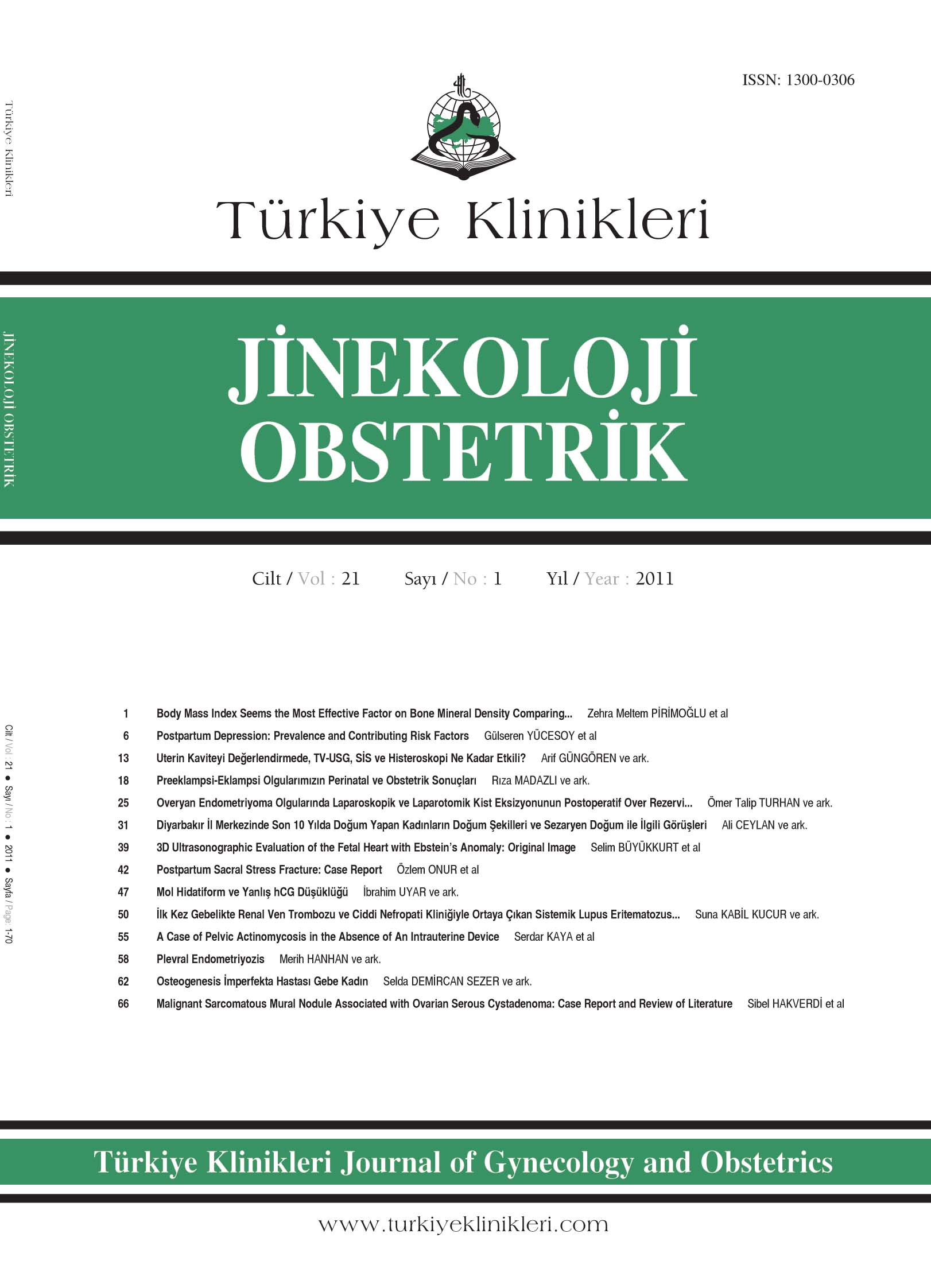Open Access
Peer Reviewed
CASE REPORTS
4192 Viewed2064 Downloaded
Hydatidiform Mole and False Low Level of hCG: Case Report
Mol Hidatiform ve Yanlış hCG Düşüklüğü
Turkiye Klinikleri J Gynecol Obst. 2011;21(1):47-9
Article Language: TR
Copyright Ⓒ 2025 by Türkiye Klinikleri. This is an open access article under the CC BY-NC-ND license (http://creativecommons.org/licenses/by-nc-nd/4.0/)
ÖZET
Gestasyonel trofoblastik hastalığı bulunan bazı nadir olgularda, çok yüksek düzeydeki serum hCG düzeyleri laboratuvar tarafından yanlış olarak düşük bulunabilir. Literatürde hook etkisi olarak adlandırılan bu durum, hastanın tanı ve takibini etkileyebilir. Klinik ve ultrasonografik bulguları molar gebelikle uyumlu bir hastada, serum beta-hCG düzeyleri çok düşük ve idrarda gebelik testi negatif olarak rapor edildi. Ancak dilüe edilerek çalışılan idrar testinde gebelik testi pozitif olarak geldi ve serumda beta-hCG düzeyi çok yüksek sonuç verdi (2.183.000 mIU/mL). Vakum küretajla tedavisi yapılan ve patolojik sonucu komplet mol hidatiform çıkan hasta, taburcu edilerek takibe alındı. Gestasyonel trofoblastik hastalık düşünülen olgularda, klinik bulgularla uyumsuz bir şekilde düşük hCG bulunduğunda, testlerin dilüe serumla tekrarlanması için laboratuvar uyarılmalıdır.
Gestasyonel trofoblastik hastalığı bulunan bazı nadir olgularda, çok yüksek düzeydeki serum hCG düzeyleri laboratuvar tarafından yanlış olarak düşük bulunabilir. Literatürde hook etkisi olarak adlandırılan bu durum, hastanın tanı ve takibini etkileyebilir. Klinik ve ultrasonografik bulguları molar gebelikle uyumlu bir hastada, serum beta-hCG düzeyleri çok düşük ve idrarda gebelik testi negatif olarak rapor edildi. Ancak dilüe edilerek çalışılan idrar testinde gebelik testi pozitif olarak geldi ve serumda beta-hCG düzeyi çok yüksek sonuç verdi (2.183.000 mIU/mL). Vakum küretajla tedavisi yapılan ve patolojik sonucu komplet mol hidatiform çıkan hasta, taburcu edilerek takibe alındı. Gestasyonel trofoblastik hastalık düşünülen olgularda, klinik bulgularla uyumsuz bir şekilde düşük hCG bulunduğunda, testlerin dilüe serumla tekrarlanması için laboratuvar uyarılmalıdır.
ABSTRACT
In some rare cases of gestational trophoblastic disease, a large amount of serum hCG may be measured falsely low by laboratory. This phenomenon which is called as "hook effect" in literature may effect the diagnosis and treatment. In a case whose clinical and ultrasonographic findings suggested molar pregnancy, very low serum beta-hCG values and negative urine pregnancy test were reported. On the other hand, diluted serum specimens gave very high levels of beta-hCG (2.183.000 mIU/mL) and positive urine pregnancy test. Vacuum curettage was performed and pathologic result was reported as complete mol hydatiform. The patient was discharged and followed up. When low level of hCG is found in cases who are suspected to have gestational trophoblastic disease incompatibly with clinical findings, laboratory should be warned to repeat the tests with diluted serum.
In some rare cases of gestational trophoblastic disease, a large amount of serum hCG may be measured falsely low by laboratory. This phenomenon which is called as "hook effect" in literature may effect the diagnosis and treatment. In a case whose clinical and ultrasonographic findings suggested molar pregnancy, very low serum beta-hCG values and negative urine pregnancy test were reported. On the other hand, diluted serum specimens gave very high levels of beta-hCG (2.183.000 mIU/mL) and positive urine pregnancy test. Vacuum curettage was performed and pathologic result was reported as complete mol hydatiform. The patient was discharged and followed up. When low level of hCG is found in cases who are suspected to have gestational trophoblastic disease incompatibly with clinical findings, laboratory should be warned to repeat the tests with diluted serum.
MENU
POPULAR ARTICLES
MOST DOWNLOADED ARTICLES





This journal is licensed under a Creative Commons Attribution-NonCommercial-NoDerivatives 4.0 International License.










